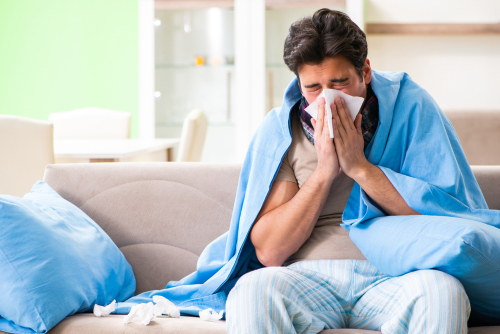
As winter approaches, an early surge in flu cases is causing alarm across several U.S. states, with healthcare systems bracing for the impact. In a striking departure from typical seasonal patterns, seven states are reporting significant increases in flu infections, with Louisiana experiencing a 50% rise in hospital admissions due to the virus. This uptick accounts for nearly six percent of all hospital visits in the state, signaling a potentially challenging season ahead for both patients and medical professionals.
The resurgence of influenza is particularly pronounced in southern and southwestern regions, including Alabama, Florida, Georgia, Mississippi, New Mexico, and South Carolina. These areas have been designated as having ‘high’ levels of respiratory illness, a stark contrast to the same period last year when only New Mexico and Alaska reported such elevated flu activity. The national picture is equally concerning, with flu hospitalizations increasing by half in just one week, reaching 8,000 since the season’s onset, and deaths climbing by 48% to 490 fatalities.
The CDC estimates there have already been 1.6 million flu cases and health officials are urging people to take health precautions for their holiday gatherings. CDC director Dr. Mandy Cohen joins us with what you should know. pic.twitter.com/sDjB6USb3j
— TODAY (@TODAYshow) November 21, 2023
Experts are attributing this early and aggressive flu season to a ‘lockdown effect,’ suggesting that the social distancing measures of the past years have altered the natural immunity landscape. With more individuals now interacting in what has been described as an ‘intense normal’ manner, the opportunity for the flu virus to spread has markedly increased. Additionally, the noticeable decline in mask-wearing compared to last year may be contributing to the virus’s rapid transmission.
The dominant strain of influenza circulating this year is Type A, which is typically associated with milder disease. However, this has not prevented the sharp rise in cases and hospitalizations. The Centers for Disease Control and Prevention (CDC) estimates that approximately 780,000 people have been infected with the flu so far this season. The current hospitalization rate of 1.7 admissions per 100,000 people is significantly higher than the pre-pandemic average for this time of year, which did not exceed 1.3 per 100,000.
Health officials are warning travelers of an uptick in COVID cases as the Bay Area prepares for another 'tripledemic' of COVID, flu and RSV cases. @UCSF infectious disease experts shared how you can best prepare for traveling this holiday season. https://t.co/8cfBvT9IaL pic.twitter.com/6M3xJDhIu1
— ABC7 News (@abc7newsbayarea) November 21, 2023
In addition to the flu, other respiratory illnesses are also showing worrying trends. Covid-19 cases appear to be on the rise again, with wastewater surveillance indicating an increase in virus concentration. Hospitalizations due to Covid-19 have also seen an uptick, although they remain below the figures recorded at the same time last year. Respiratory syncytial virus (RSV) is another concern, with its positivity rate climbing to 14% from below 10% in the previous month.
The convergence of flu, Covid-19, and RSV cases could pose a significant challenge to the healthcare system, potentially leading to what some are calling a ‘double whammy’ of infectious diseases. This situation is exacerbated by the fact that the flu vaccine uptake is currently lower than desired, with only about 35% of adults and 33% of children having received their shots.
As families and friends make plans for Thanksgiving reunions and travel, there is a heightened risk of further spreading these viruses. The anticipated increase in mobility during the holiday season could serve as a catalyst for even more widespread transmission, underscoring the importance of vigilance and preventative measures.
This year’s flu season serves as a stark reminder of the ongoing challenges posed by infectious diseases and the need for continued public health efforts. As we navigate the colder months, it is crucial for individuals to consider vaccination and adhere to recommended health practices to protect themselves and their communities from the flu and other respiratory illnesses.












